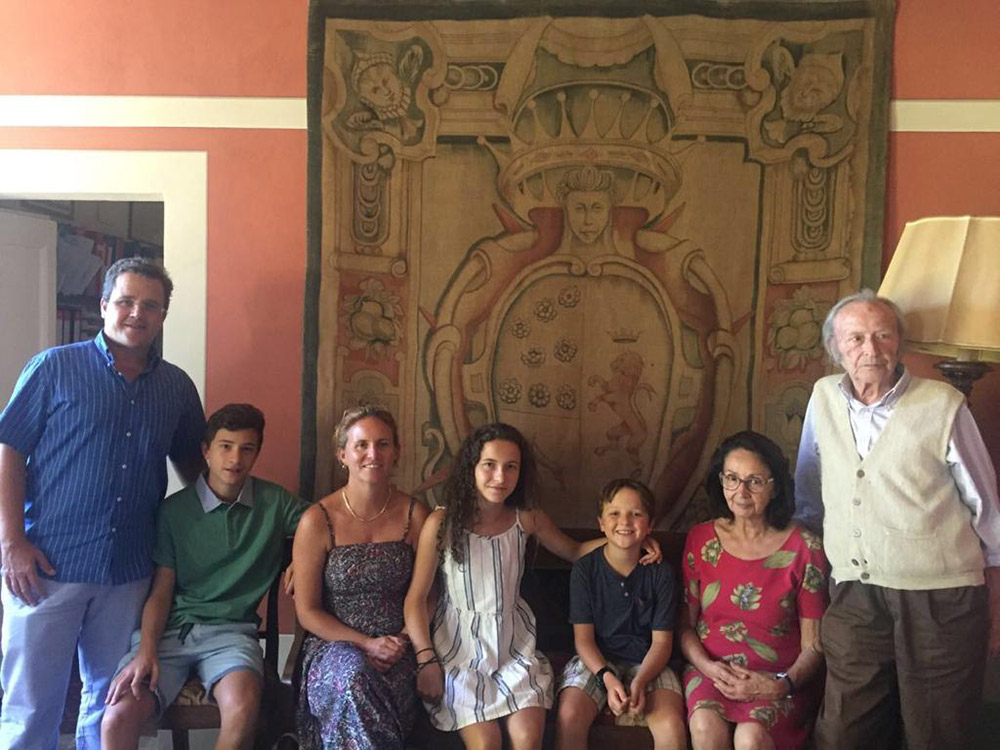Fattoria di Pietrabuona belongs to the Galeotti Flori family since 1200.
It is a much loved and in past years much less. Today it is much loved and our wish is that the many people, who from all over the world come here for a holiday, feel our feelings and appreciate these places.
The farm has adapted to changing times. Today it is particularly attentive to the sustainability and maintenance of the environment.
Here is a photo of a family meeting. Lots of us are far away but the pleasure of being together in Pietrabuona is always great.

The property is situated 5 km from Pescia and is on a hill which is partly cultivated with olive trees, according to ancient tradition, and partly covered with chestnut trees.
The ‘Fattoria di Pietrabuona’, which has always been owned by the Galeotti Flori family, covers a total area of about 40 hectares, mostly located on the hill of Zano: an evergreen hill in the area known as Svizzera Pesciatina in Valleriana, with a farm road passing through along which there are the farm houses of the 7 old farms, all now renovated in accordance with their original architectural style.
Some farmhouses consist of a single apartment, others are divided into two or three apartments the names of which recall the farmer who used to live there or how that part of the farmhouse was used.
But what does “farm” mean? Farm, from the latin word fundus, is the elementary property unit of a rural society, which includes all the necessary facilities to ensure a livelihood for a peasant family.
The term “farm”, is intended to indicate the fact that it is proportionate to the arable extension to the “power” of the family settled in the fund, that is, to its working potential.
From the Middle Ages until the 60’s, the farm was the centre of the Tuscan peasant society.
The property included the land and the farmhouse where the farmer lived with his family, who helped with the agricultural work.
There were many and different cultivations in order to cover all needs and make farmers totally self-sufficient.
The farmhouse, the place where farm families lived and worked, also included rooms intended for different uses, which generally occupied parts of a farmhouse.
In homage to the tradition and long history of the place, we have not changed the names of these apartments, so as to remember that: animals were sheltered in the stables, wine was processed in the cellar and in the fermentation room, grain was kept in the granary, chestnuts were dried in the ‘metato’, a small stone hut, in order to obtain the flour and hay was kept in the barn.









